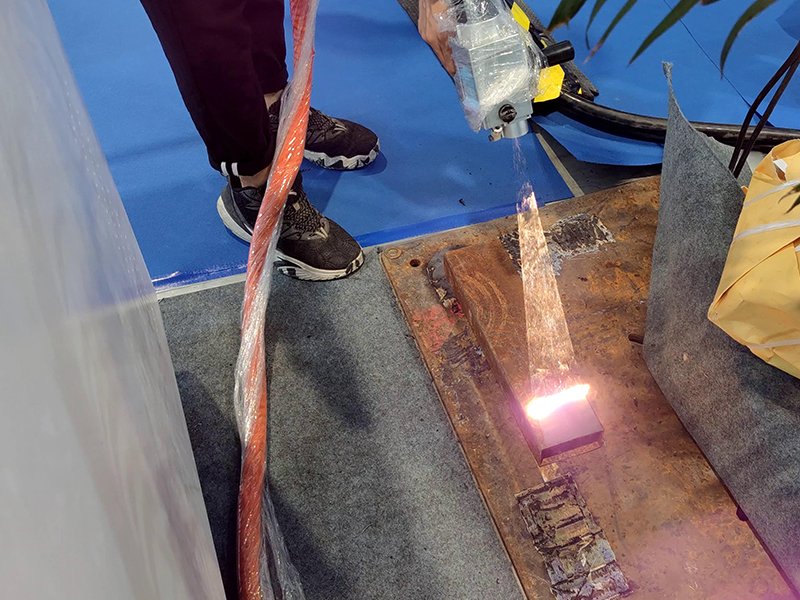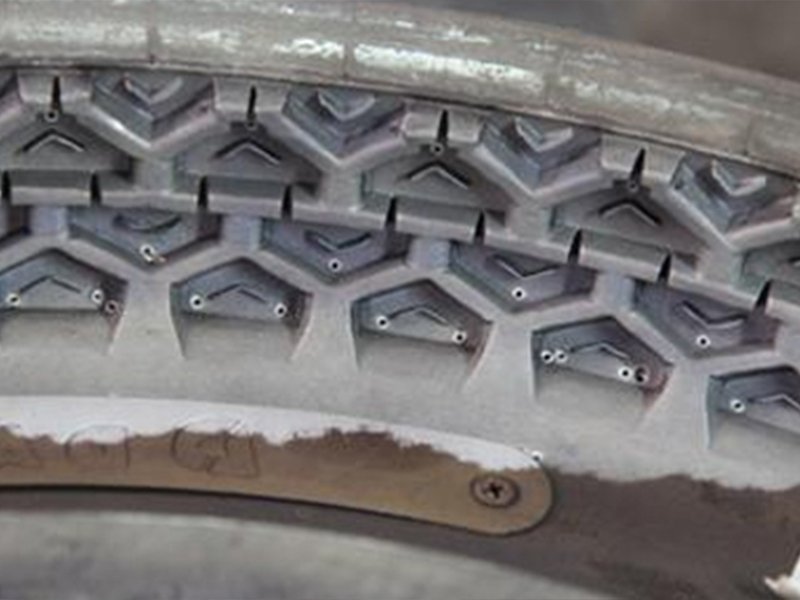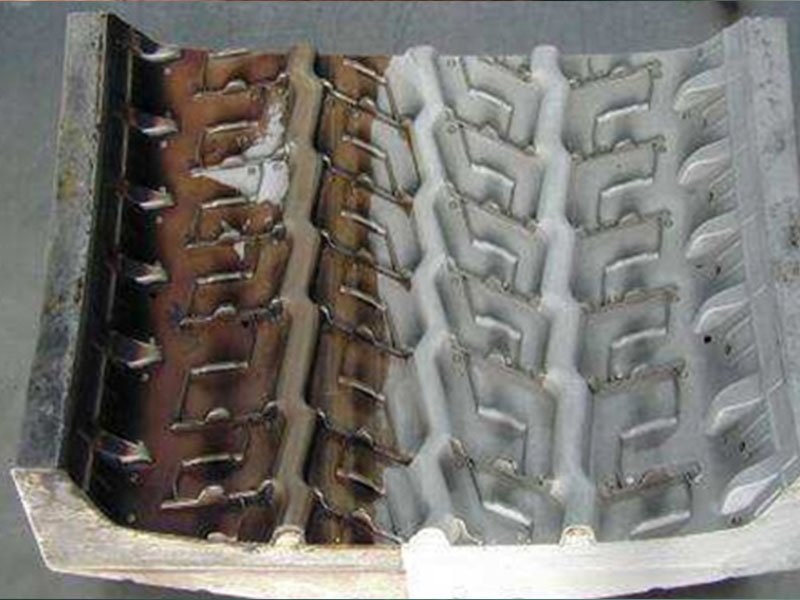En el mundo actual donde los avances tecnológicos parecen moverse a la velocidad de la luz, el concepto de limpieza láser se convierte en una auténtica maravilla de la innovación. ¿Alguna vez se ha detenido a pensar en el fascinante y complejo proceso detrás del aparentemente milagroso proceso de limpieza con láser?
Muchos clientes se preguntan ¿Cómo funciona la eliminación de óxido con láser? Y ahora este artículo profundiza en el funcionamiento interno de esta solución de limpieza de última generación .

¿Qué es la limpieza láser?
La limpieza con láser es una técnica de limpieza de última generación que utiliza el poder de los láseres para eliminar contaminantes de diversas superficies. Es un método sin contacto y no abrasivo que ofrece numerosas ventajas respecto a los métodos de limpieza tradicionales. Al aprovechar la energía de los rayos láser, la limpieza con láser puede eliminar eficazmente la suciedad, el óxido, la pintura, la grasa y otras sustancias no deseadas sin dañar el material subyacente.
El proceso consiste en dirigir un rayo láser de alta intensidad sobre la superficie a limpiar. La energía del láser hace que los contaminantes se vaporicen o sublimen, convirtiéndolos en gases o partículas finas que se pueden eliminar fácilmente. La limpieza con láser es muy precisa y selectiva, lo que permite la eliminación específica de contaminantes específicos sin tocar el resto de la superficie.
El principio detrás de la limpieza con láser
El principio de la limpieza con láser reside en la interacción entre la luz y la materia. Cuando un rayo láser entra en contacto con una superficie, calienta los contaminantes de esa superficie. A medida que la temperatura aumenta rápidamente, se genera estrés térmico dentro de los contaminantes. Este estrés hace que se rompan y finalmente se desintegren.
Además, los láseres también pueden inducir reacciones fotoquímicas excitando electrones en moléculas o átomos presentes en los contaminantes. Esta excitación provoca cambios químicos dentro de estas sustancias, lo que las hace más fáciles de eliminar.
¿Cómo funciona la limpieza láser?
Componentes de un sistema de limpieza láser
Un limpiador láser típico a la venta consta de varios componentes clave:
- Fuente láser: De aquí se origina el rayo láser. Se pueden utilizar diferentes tipos de láseres para fines de limpieza, incluidos láseres de fibra, láseres pulsados y láseres de onda continua.
- Óptica: La óptica se utiliza para enfocar y dirigir el rayo láser hacia la superficie objetivo con precisión.
- Sistema de escaneo: El sistema de escaneo controla el movimiento del rayo láser a través de la superficie, asegurando una cobertura de limpieza profunda.
- Unidad de control: La unidad de control regula varios parámetros del proceso de limpieza con láser, como la potencia, la duración del pulso y la velocidad de escaneo.
- Sistema de extracción de humos: Como los contaminantes se vaporizan o subliman durante la limpieza con láser, es necesario un sistema de extracción de humos para capturar y eliminar estos subproductos.
Tipos de contaminantes eliminados mediante limpieza manual con láser
La limpieza con láser puede eliminar eficazmente una amplia gama de contaminantes de diferentes superficies. Algunos tipos comunes de contaminantes que se pueden eliminar mediante la limpieza con láser incluyen:
- Óxido: Los rayos láser pueden vaporizar las capas de óxido de las superficies metálicas, devolviéndolas a su estado original.
- Pintura: ya sea pintura vieja en una pared o revestimientos de equipos industriales, los láseres pueden quitar capas de pintura sin dañar el material subyacente.
- Graffiti: la limpieza con láser ofrece un método seguro y eficiente para eliminar graffiti de diversas superficies, incluidas paredes de ladrillo y estructuras metálicas.
- Oxidación: Las capas de oxidación de los metales se pueden eliminar fácilmente mediante técnicas de limpieza con láser, revelando superficies limpias y libres de corrosión.
- Grasa y aceite: los rayos láser pueden vaporizar rápidamente los residuos de grasa y aceite en las superficies, dejándolas limpias y listas para su posterior procesamiento o inspección.
Ventajas de ahorro de costos
La limpieza con láser ofrece varias ventajas de ahorro de costes en comparación con los métodos de limpieza tradicionales. En primer lugar, elimina la necesidad de disolventes químicos o materiales abrasivos que normalmente se utilizan en otras técnicas. Esto reduce el costo asociado con la compra y eliminación de estas sustancias.
Además, la limpieza con láser es un proceso muy eficiente que requiere una mínima mano de obra. Puede automatizarse para limpiar áreas grandes o geometrías complejas con facilidad, reduciendo el tiempo y la mano de obra necesarios para las tareas de limpieza. Esta mayor eficiencia se traduce en importantes ahorros de costes para las empresas.
Ventajas de utilizar la limpieza láser
Las ventajas de utilizar la limpieza láser frente a los métodos de limpieza tradicionales son numerosas:
- Precisión: La limpieza con láser permite apuntar con precisión a los contaminantes sin afectar el material circundante.
- Sin daños: A diferencia de las técnicas abrasivas, la limpieza con láser no daña la superficie que se limpia.
- Sin productos químicos: La limpieza con láser es un proceso libre de químicos, lo que lo hace respetuoso con el medio ambiente y seguro para los operadores.
- Sin residuos: Los contaminantes vaporizados se eliminan eficazmente durante el proceso, sin dejar residuos.
- Versatilidad: La limpieza con láser se puede utilizar en una amplia gama de materiales, incluidos metales, plásticos, cerámicas y más.

Aplicaciones de la limpieza láser en diferentes industrias
La limpieza con láser encuentra aplicaciones en diversas industrias debido a su versatilidad y eficacia. Algunos ejemplos notables incluyen:
- Aeroespacial: La limpieza con láser se utiliza para eliminar los recubrimientos de los componentes de las aeronaves, garantizando un rendimiento y una seguridad óptimos.
- Automotor: Se emplea en procesos de fabricación de automóviles para limpiar piezas de motores, moldes y otros componentes.
- Conservación del Patrimonio Cultural: La limpieza con láser ayuda a restaurar artefactos delicados y estructuras históricas sin causar daños.
- Fabricación de metal: Se utiliza para preparar superficies metálicas para soldar, pintar o procesar más.
- Electronics: Laser cleaning can remove solder residues and other contaminants from electronic components.
Ventajas ambientales
La limpieza con láser ofrece importantes ventajas medioambientales en comparación con los métodos de limpieza tradicionales. Al no requerir el uso de químicos ni materiales abrasivos, elimina la generación de residuos peligrosos. Esto reduce el impacto sobre el medio ambiente y minimiza la necesidad de costosos procedimientos de eliminación.
Además, la limpieza con láser es un proceso de alta eficiencia energética. La localización precisa de los contaminantes garantiza un desperdicio mínimo de energía, lo que la convierte en una opción sostenible para las necesidades de limpieza industrial.
Comparación: limpieza con láser versus métodos de limpieza tradicionales
Al comparar la limpieza con láser con los métodos de limpieza tradicionales, se hacen evidentes varias diferencias clave:
- Precisión: La limpieza con láser ofrece una precisión incomparable para detectar contaminantes sin afectar el material subyacente, mientras que los métodos tradicionales pueden causar daños o dejar residuos.
- Eco-Friendliness: Laser cleaning is a chemical-free process that generates minimal waste, making it more environmentally friendly than techniques that rely on solvents or abrasive materials.
- Seguridad: La limpieza con láser elimina la exposición a productos químicos nocivos y reduce el riesgo de accidentes asociados con técnicas abrasivas.
- Eficiencia: La limpieza con láser es muy eficiente y puede automatizarse para aplicaciones a gran escala, lo que reduce los costos de mano de obra y los requisitos de tiempo en comparación con los métodos manuales.
No destructivo
Una ventaja clave de la limpieza con láser es su naturaleza no destructiva. La energía controlada proporcionada por los láseres permite la eliminación precisa de contaminantes sin causar daños a superficies delicadas o sensibles. Esto hace que la limpieza con láser sea especialmente adecuada para aplicaciones en las que preservar la integridad del material es crucial, como en la restauración de artefactos históricos o la limpieza de componentes electrónicos.
Medidas de seguridad y consideraciones para la limpieza con láser
Si bien la limpieza con láser ofrece numerosos beneficios, es esencial seguir medidas y consideraciones de seguridad para garantizar una operación segura:
- Equipo de protección: Los operadores deben usar equipo de protección adecuado, incluidas gafas de seguridad para láser, para proteger sus ojos de la radiación láser.
- Ventilación: Deben existir sistemas adecuados de ventilación y extracción de humos para eliminar los subproductos generados durante el proceso de limpieza.
- Training: Los operadores deben recibir capacitación adecuada sobre protocolos de seguridad láser y procedimientos operativos para minimizar el riesgo de accidentes.
- Mantenimiento: El mantenimiento y la calibración regulares de los equipos de limpieza láser son necesarios para garantizar un rendimiento y una seguridad óptimos.

Preguntas más frecuentes
¿Puedes utilizar un láser para eliminar el óxido del metal?
¡Absolutamente! La limpieza con láser es muy eficaz para eliminar el óxido de las superficies metálicas. La intensa energía emitida por los láseres hace que las capas de óxido se vaporicen o sublimen, dejando metal limpio. Este proceso puede restaurar objetos metálicos oxidados o preparar superficies para tratamientos posteriores, como pintura o soldadura.
¿Por qué debería elegir una máquina de limpieza láser?
Si busca una solución de limpieza de vanguardia que ofrezca precisión, eficiencia y respeto al medio ambiente, una máquina de limpieza láser es una excelente opción. Las máquinas de limpieza láser aportan numerosas ventajas respecto a los métodos tradicionales:
- Localización precisa de contaminantes sin dañar el material subyacente
- Sin necesidad de productos químicos ni materiales abrasivos
- Mínima generación de residuos
- Altamente eficiente y ahorra tiempo
- Seguro para los operadores
- Amplia gama de aplicaciones en todas las industrias
¿Cómo uso las máquinas de eliminación de óxido con limpieza láser?
Usar una máquina de eliminación de óxido con limpieza láser es un proceso sencillo:
- Asegúrese de tener el equipo de protección adecuado, incluidas gafas de seguridad para láser.
- Coloque el objeto o superficie de metal oxidado en un lugar adecuado para su limpieza.
- Seleccione los parámetros del láser deseados, como la potencia y la duración del pulso, según los requisitos específicos de la tarea de eliminación de óxido.
- Apunte el rayo láser al área oxidada y active el proceso de limpieza.
- Mantenga un movimiento constante y controlado del rayo láser a través de la superficie para garantizar una cobertura de limpieza profunda.
- Monitorear el progreso del proceso de limpieza y ajustar parámetros si es necesario.
- Una vez que se haya eliminado el óxido, inspeccione la superficie limpia para garantizar resultados satisfactorios.
